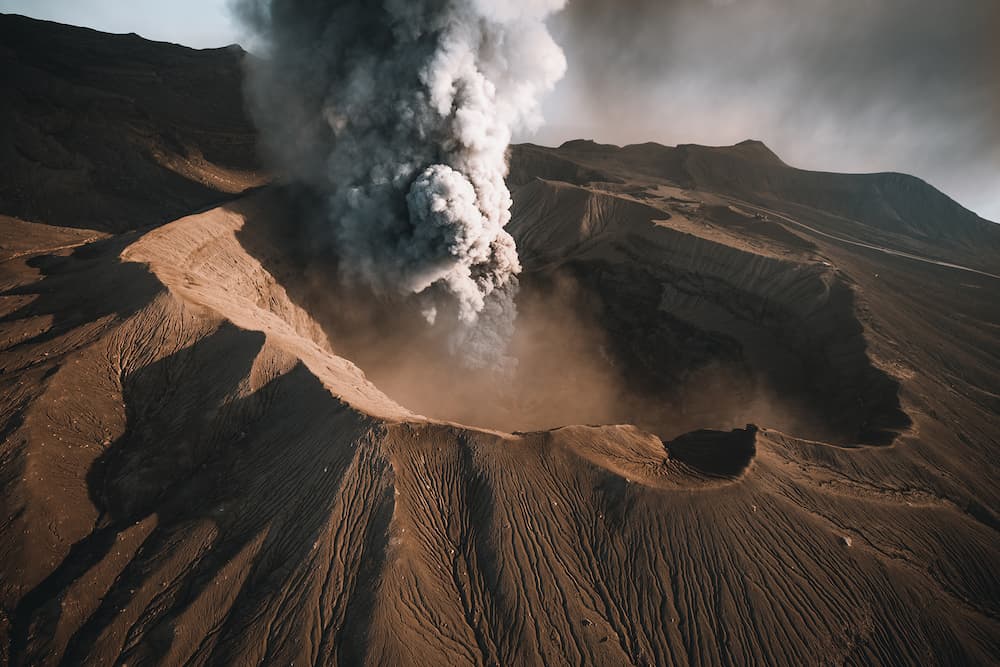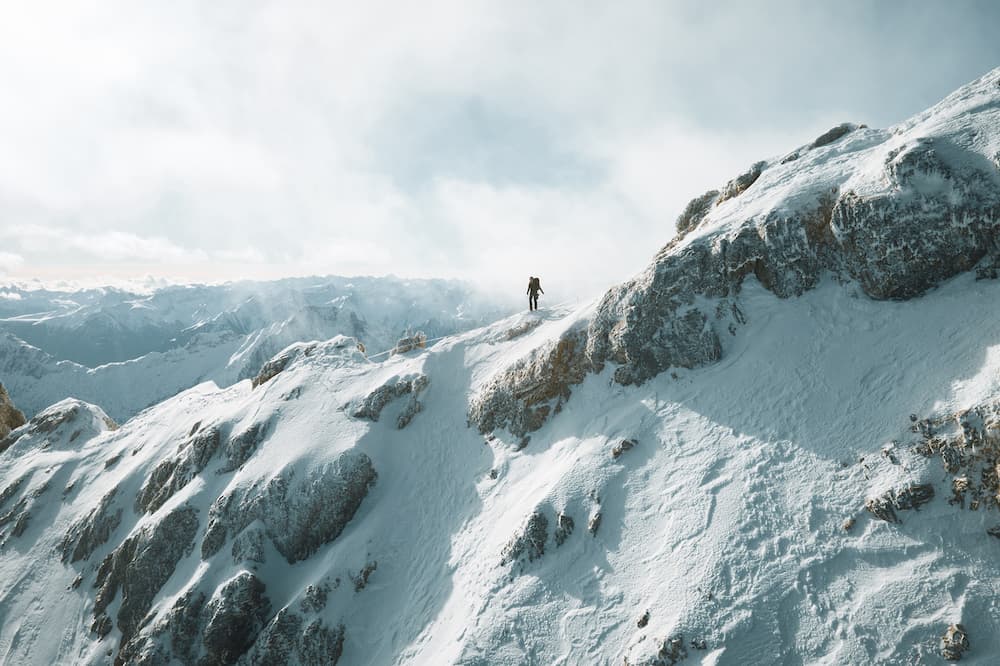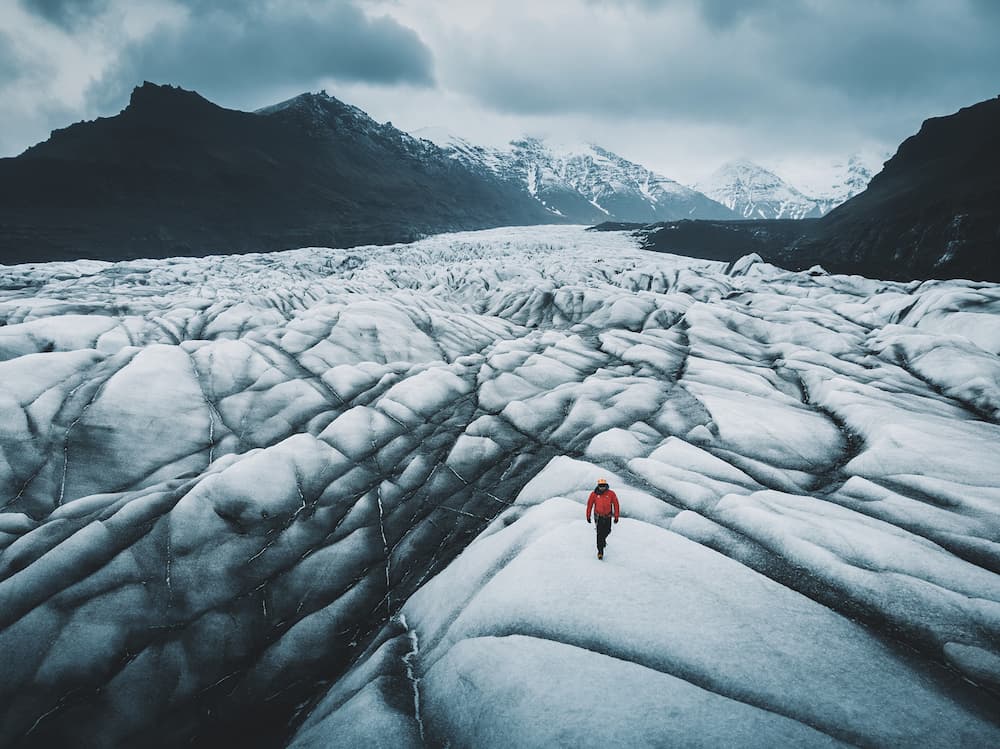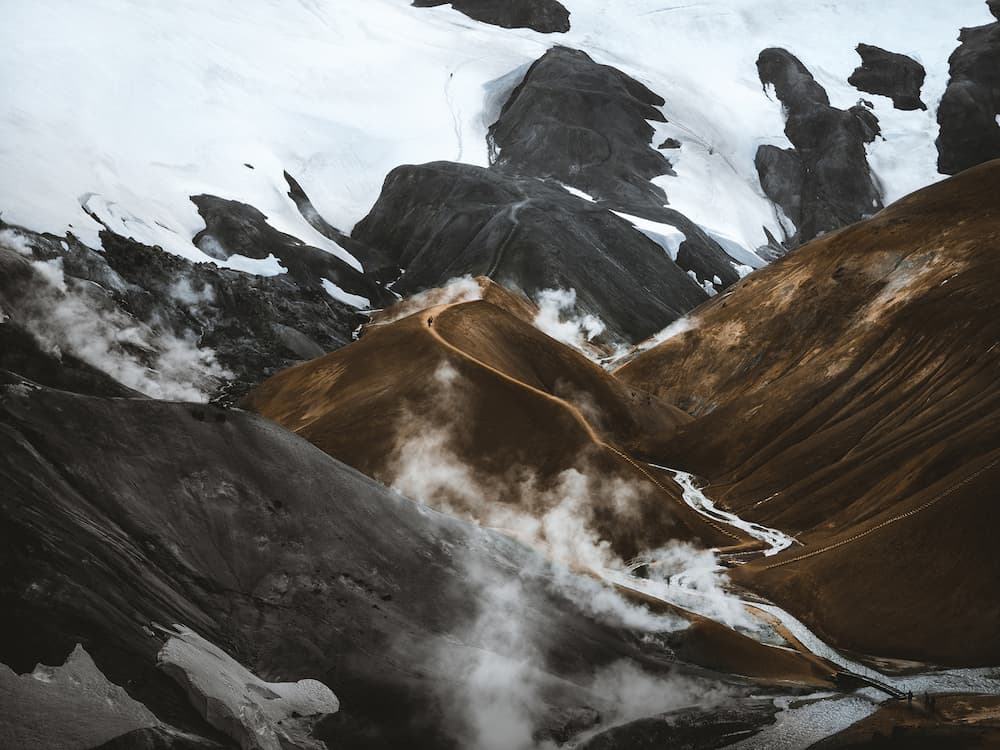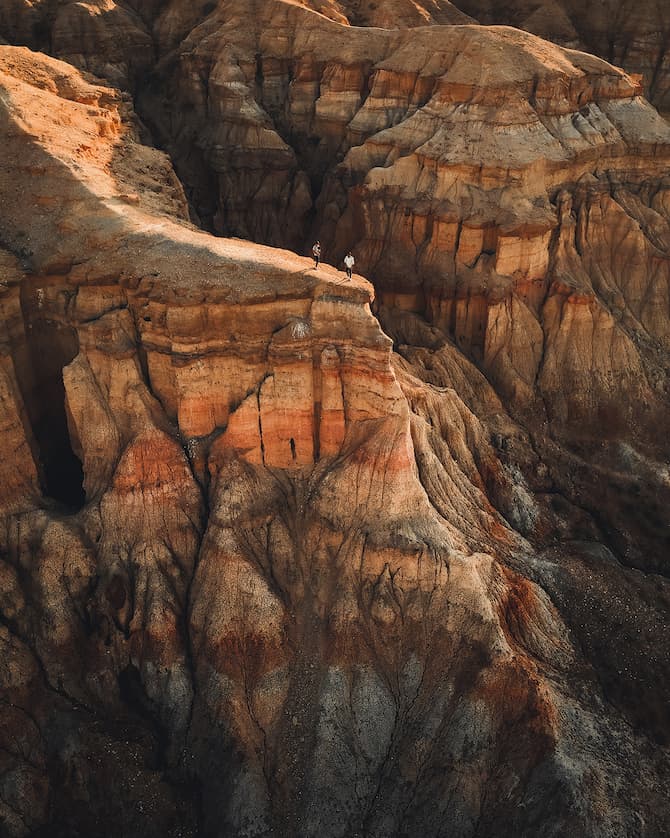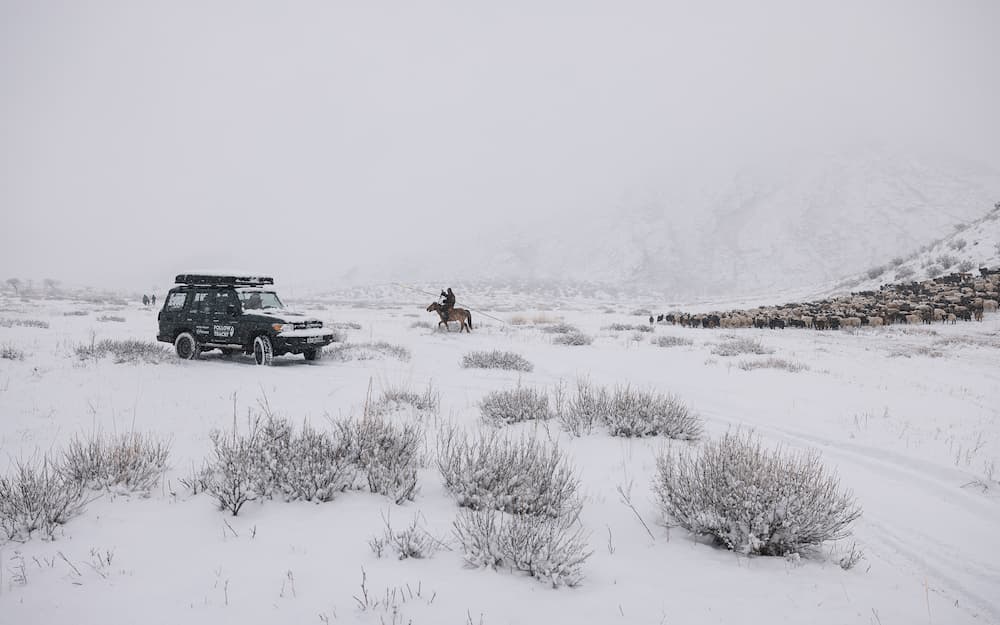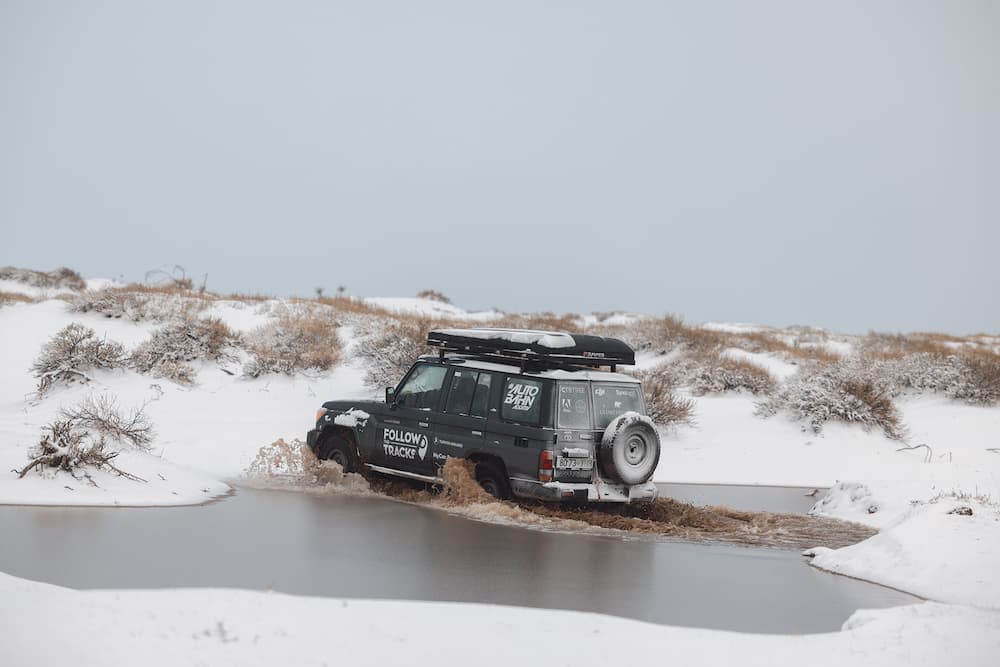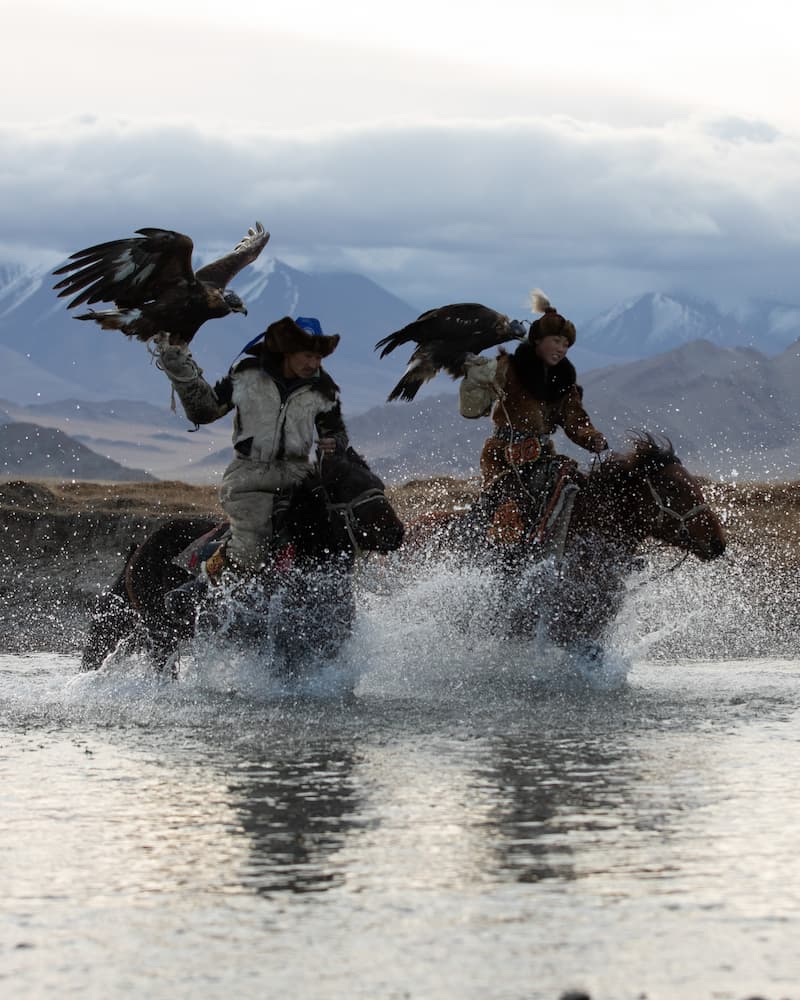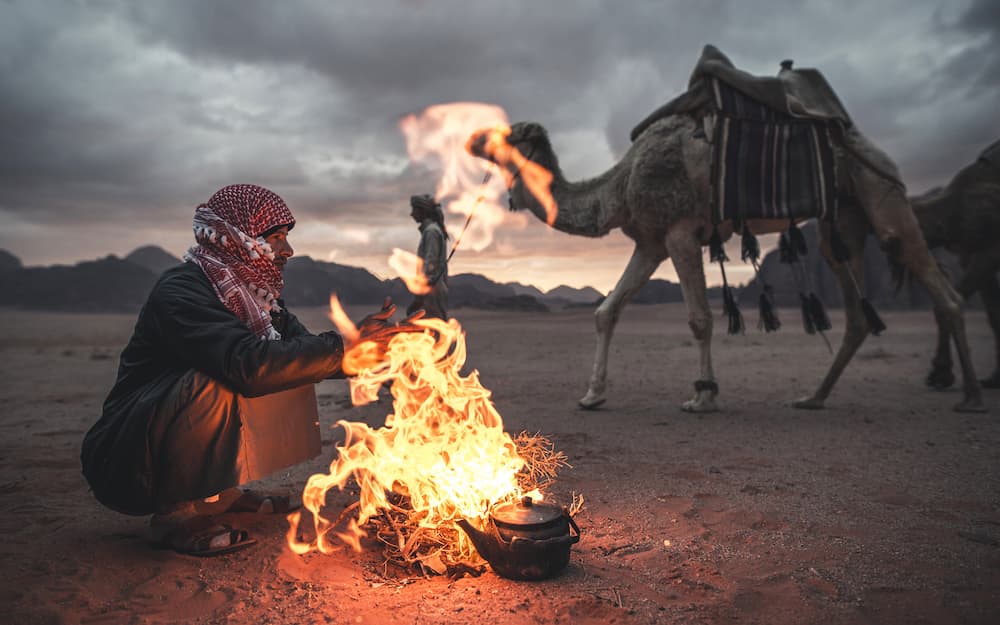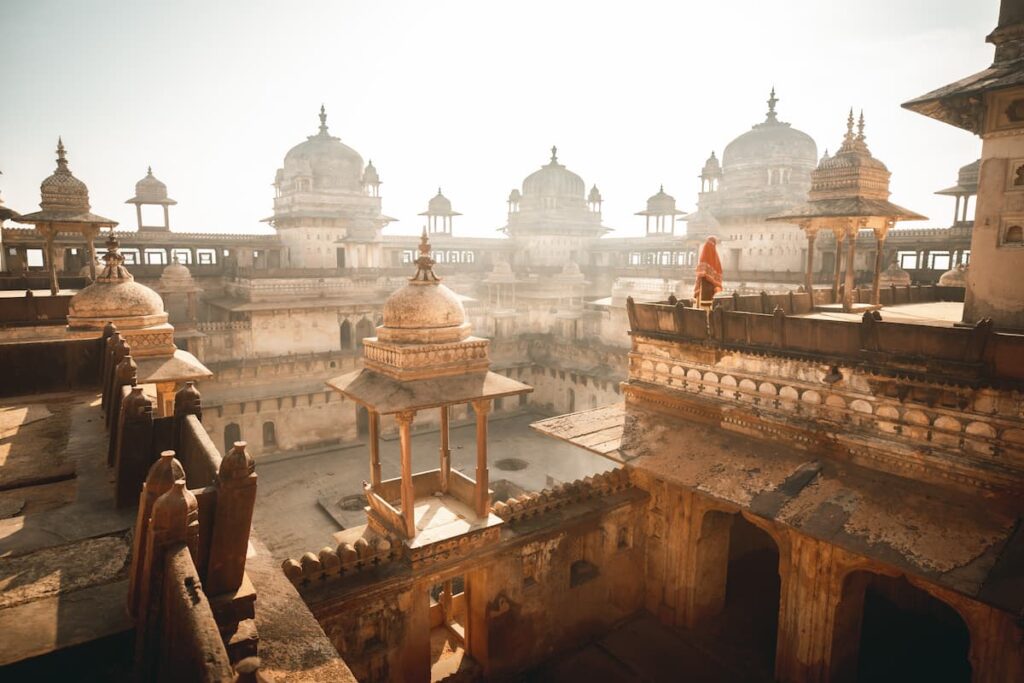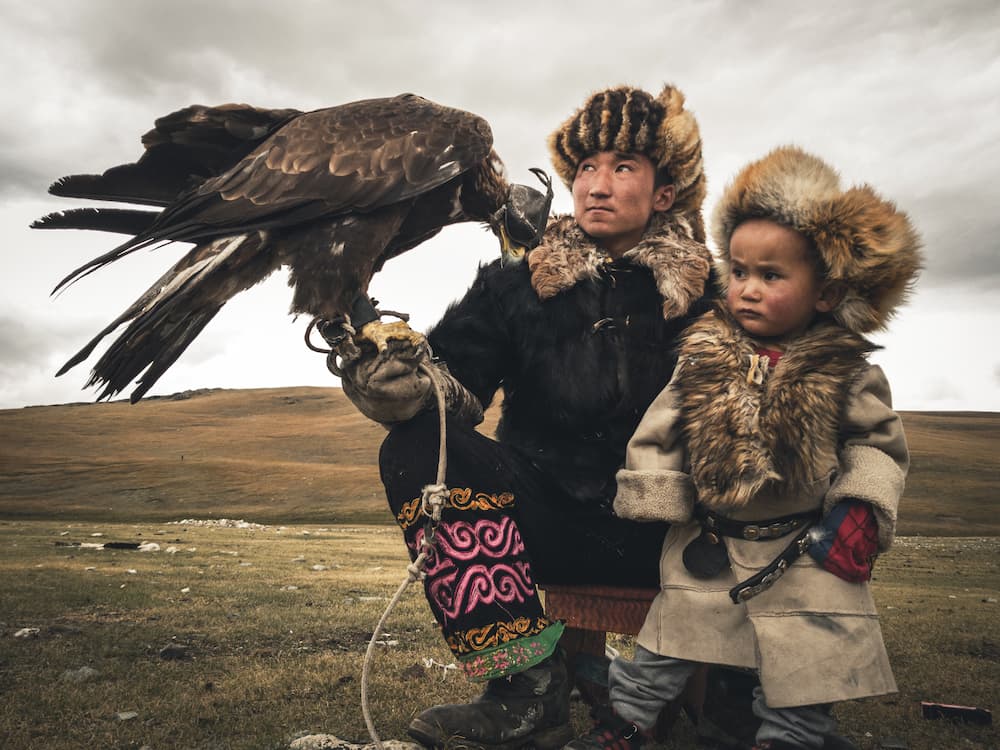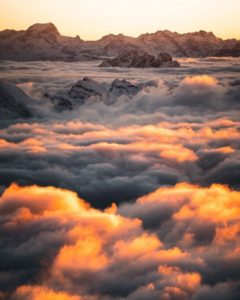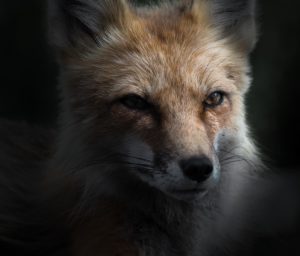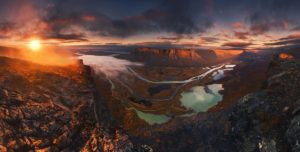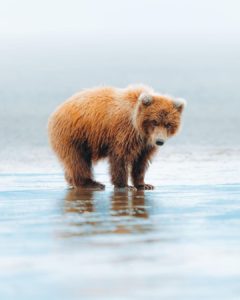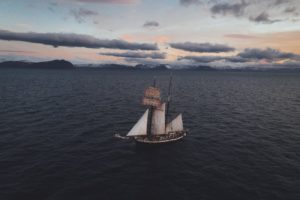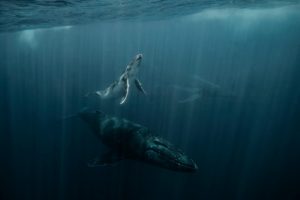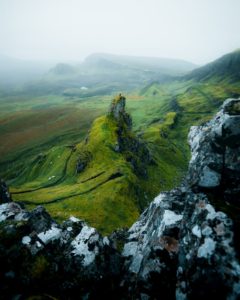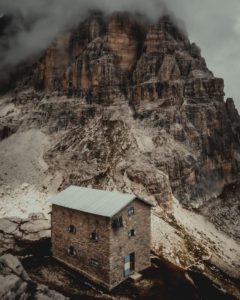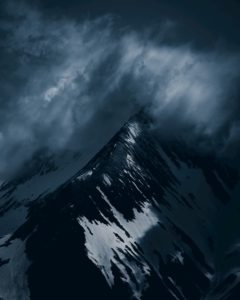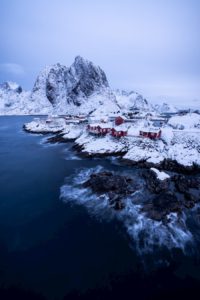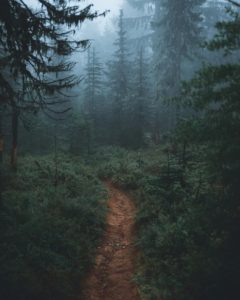
Max Muench
@muenchmax
Photographer based in Germany
Max studied music production and used to be a concert pianist. Because of his concerts all over Europe, he got into traveling early on. Since 2015, his way of traveling has significantly changed: photography and film have turned from a hobby into his full-time profession – and that is how he gets to see the world nowadays.
Expedia was his first client after pitching to many that had rejected. With perseverance, today Max is proud to work with brands like Mercedes-Benz, Samsung, and Adobe. Max says, “You need to burn for something. You need to enjoy what you are doing. You need to have a fire in you that says, this is what I want to do.”
Becoming a professional in what he does and distinguishing himself as a professional has been Max’s most significant challenge. It has meant investing a lot of time and patience, as well as working to innovate and find originality. According to Max, the only way to get there is to start, to experience the good and the difficult, and to keep going. In this interview, Max talks about how he invested his time to get better at what he does, and what he thinks is crucial when preparing a pitch for a client.
In 2016, Max went to Mongolia to shoot images for AdobeStock. He fell in love with the country, its culture, and its colors. After going back several times, in 2019, Max created Followthetracks, an off-road adventure travel/tour company with the main goal of introducing more people to Mongolia and helping the local economy. Max offers different tours, mentorships, and master classes. In the interview, he also gives a short insight into the nomad’s life and how their culture has had to change and adapt over the past years.
Max’s editing style is influenced by the colors of Mongolia too. We asked him about his editing tricks, workflow, and how he distinguishes himself from other creators. We also discuss four images he is proud of, taken in four different countries.
To learn from Max in detail, we recommend you read the full interview!
Interview
Where does your passion for travel and photography come from?
I would love to know as well. I’m actually a pianist, I used to play concerts in Europe and this was the only way for me to travel. It was very exciting when I was younger. Then, about 12 years ago, I moved to Berlin to study music. I wanted to learn composition and music production. Coming from a rather small city, this was a big shock. After some time I began to travel around Germany a lot, and then I realized I wanted to see other cultures too.
The first time I went out of Europe I went to Tanzania in Africa. Since that trip, I cannot stop traveling. I want to wake up somewhere else every day, I’m ready to explore anywhere and grateful that I have the opportunity to do that as a photographer. I had been taking photos my entire life already, carrying my old camera with me anywhere I went.
"At some point, I had a smartphone (2013-2014), and started taking photos with this Samsung, which later turned into a client that I'm most proud of and that I still work together with until this day."
How photography became your main job?
This is all thanks to Instagram. I began to pitch ideas to potential clients and brands and told them about the opportunities of social media. The first brand I pitched to was a travel agency called Expedia. I flew to London and pitched them an idea they liked and from that moment on I began to shoot also for clients, besides the shooting I had been doing for myself.
The ball kept rolling and was able to start doing photography full-time in 2015. I am now a photographer and consultant for many brands like Mercedes-Benz, Samsung, Adobe, and other well-known brands. In the first years, I worked with a lot of tourism boards. I was traveling to two or three countries every month. Sometimes even five or six countries, which was very intense. The big step came in 2017, from that moment I had no real base and traveled for three years straight.
How did you switch from music to photography?
It is a funny story. My girlfriend back then, at the end of 2014, broke up with me at Christmas. I decided I hated city life, I had enough of people, and wanted to go into nature. I met someone, now a friend of mine called Max, and we just went out into the heart of Germany, surrounded by many trees and mountains. We started taking photos there and I posted this on IG for fun. Nevertheless, I noticed there was a lot of potential. IG then became something I wanted to invest more time into, so I quit the jobs that I had back then. I was working at two cafes, for a car brand to take photos of their car interior, and I had of course all my concerts.
I invested a lot of time, I practiced a lot, and I met a lot of people. I think connecting with people is really important because you are never alone in your journey. You may think you are, but if you connect with others, and share the same passion and ideas, while having a different background and level of knowledge, you realize you are not… You can get together and it is to everyone’s advantage. That is how and why we founded German Roamers.
You had a strong vision of what you wanted and the perseverance to follow this path. What can you share with us about that?
You need to burn for something. You need to enjoy what you are doing. You need to have a fire in you that says, this is what I want to do.
So many people laughed at me, or said to me ‘what are you doing, are you stupid?’, ‘Do your uni stuff’, telling me what or what not to do. The more people told me to do something else, the more convinced I was about doing something completely different – visual creation.
Sometimes you just need to go against everyone else. If you believe in it you can make it work. Of course, it is a lot of hard work, not much sleep, practice, and a lot of failing and errors and mistakes because no one can teach you this, you have to learn it by yourself. But if you burn for it and don’t give up, then everything is possible.
Did you ever think about giving up?
I don’t think I have it in me to give up. I think a lot of people are looking at problems. But I am looking for solutions, possibilities, and not risks. If there are more possibilities than risks, then I don’t care about the risks. And if it fails, it fails.
I realized a few years ago that everything can be taken from me, but not my ideas. Every time something goes wrong, I move on and go to the next idea.
What did you find to be a challenge when starting photography full-time?
The biggest challenge is to acknowledge that you have to invest time. Success does not come overnight. Many people think that if you buy a good camera, that is already a go to get jobs. But now everything, especially on IG, is saturated. The challenge is that you need to do something different from everyone else. You can copy someone and you can be very successful at it. The most successful ideas work several times again in a different shape. If you copy it and you are successful, that is great. But this is not innovation. If you want to innovate, it requires a lot of work. You need to come up with one idea that fits you.
The biggest challenge, when you see something, is to see what is not there. When you read something it is hard to say what is missing, but this is exactly what I am looking for. I identify the concept and then think about what could be added or changed. This to me is the biggest challenge: finding the originality and the distinct.
What strategies do you use to find those original ideas and implement them?
For this, you need a lot of experience, and to get experience, you need to start first. You won’t experience it by reading or by looking at what other people are doing. You need to do it yourself and if you don’t start you will never have the experience to say what works and what does not work. Maybe other people can tell you what works for them. But the journey is not about other people and what works for them, it is about you and what works for you.
Maybe something works for you, or maybe not. So you need to find out. The first step is usually the hardest one.
If you have an idea, especially for a brand, how do you go from idea to execution?
First I ask myself what it needs to work together with the brand. You need a portfolio, you need a media kit, you need a presentation, you need a strategy, a vision, what you want to create for them, and why they should work with you. Be clear for yourself what your unique selling point is. Often brands, especially the bigger ones, have all the people in the world, and they have many photographers at their disposal, why should they work with you? What can you provide them? Big brands have everything they need. So you need to find this little thing they don’t have.
If you want to work with a local coffee store, look at their website. If they don’t have a website, propose to do a website and do photos for them. Look at their Instagram, and if there is room for improvement, propose to help to improve it, and show them how you would do that.
"Tell them what is their weak spot, because every business is looking to improve and get better. If you can help them in achieving a specific goal, then they can help you."
To what extent do you research your potential clients, identifying their weaknesses and creating a personalized pitch deck? How was that for you especially at the beginning?
At the beginning of my career as a photographer, I was no one. I was a random dude saying: ‘Hey, I take photos and I want to help you.” Out of 100 emails that you send out, 90 or 99 will never answer you or they will reject your offer. But if you are consistent and persistent, that one email that you get back is your ticket to get more clients and increase the frequency of the emails being (positively) responded to because you start to build your portfolio. It is really hard to get the attention of a brand you want to work with if you don’t have any references. What helps is for example to start a local business, or with a friend of yours. Ask your friends if you can take photos of them with some clothing.
What people sometimes underestimate is the importance of investment, and self-investment. This is not related to money, but rather time. You need to take time for this and invest in your passion and a specific project. If you don’t have the money, no problem. You don’t need the money to invest time. Of course, you need to maintain your lifestyle and have some free time. But if you have a vision and it is clear to you what you want, then you have to find the time.
How was it then to start working with brands regularly, including some big businesses from what we can see on your Instagram account? Did it come as a surprise or you knew that eventually, these things would happen?
I didn’t expect anything at the beginning, so I was always surprised. Back then it was about reaching out all the time. And if something came in, I was like ”wow, this is crazy”. Back in the day, it was different because IG wasn’t that saturated, so brands could recognize you much more quickly. In addition, having the community of “German Roamers” behind me helped a lot. Everyone or almost everyone now at the German Roamers works as a photographer or consultant or has something to do with photography. In 2015 I was invited to Canada, I would have never expected this. But the brand, the Canadian tourism board, said that they loved what I was doing, my photography in general. So they asked me if I wanted to take photos in Canada and show my community my perspective of the Canadian landscapes. Brands have an interest in your followers. You are the billboard, someone that shows the beauty of a place to other people. And this is very attractive to tourism boards if they want to show their place to people that would normally not reach.
I was very surprised when I visited Canada and got to my hotel room and there was a sign of German Roamers. It wasn’t even my name, but the community we created. This was the moment I realized the power of community and friendship. When you collaborate and work together with people and not against each other, this is when you will be more successful in my opinion. Everyone has their own vision, but if you can find common ground and a certain way to work together, you can find great opportunities to learn and grow together and become friends.
"This is what photography should be about, right? Having fun and making friends."
I agree. Maybe the challenging thing for many photographers is that the market is getting more saturated and as a result (some) amateur photographers can cover the needs of small-medium size businesses. What do you think about this, and is there a way to distinguish your work from the rest and be unique?
Is important to educate the photographers, but also to educate the clients. Brands are always looking for the cheapest solution. But you may relate to the following:
If you buy something really cheap, it will break soon. It may look like great quality, but maybe it is not. I know there are a lot of people out there doing photography on the side and they don’t depend on getting paid. So we as photographers have to show brands that what we do has value. Has value to them, for the people they want to reach with the photos, etc. So this is why we have to teach and educate companies to acknowledge and understand this value.
What more can you share with us about @followthetracks, your project in Mongolia you have been working on so passionately?
Followthetracks is an off-road adventure travel company, like a tour agency. Mongolia is not an easy country to travel through, it’s not very well mapped out and often has no roads. Navigating or even finding places is very difficult.
Knowing that struggle, we created a concept, where tourists book a self-drive adventure: they get in their own 4×4 with rooftop tent and camping gear, and they get handed a tablet with our custom-built navigation app that always shows them their way through the steppes and functions as their digital guide – and then they discover Mongolia on their own, on my tracks. Throughout the years I found my favourite places and now people can travel to them, stay with the same nomads I met, experience Gobi or the high Altai mountains, and much more.
But let’s take a step back here.
In 2016 I went to Mongolia for the first time and I was sent out to take photos for the stock image platform AdobeStock because there were no pictures from Mongolia on the platform. I lived with a nomadic family for a couple of weeks. I came back afterwards with my partner at the time and amazing filmmaker Alina Kondrat to explore the country on our own. We fell in love with Mongolia and kept coming back.
In 2019, I started thinking that there must be a way to bring even more people to Mongolia. I wanted to show the country to everyone, especially to people from Europe and the US. People should come and see how it is to experience pure freedom and go wherever you like and meet the most incredible people. This place is unlike anything else I’ve seen anywhere in the world and I have traveled a lot…
Living with a family the first time I went, surely opened my eyes to the lifestyle. It is more surviving than living because it’s really rough and seeing how little they need to be happy, inspired me so much. The problems we experience in the Western world are non-existent there as people have to be busy with other things to keep themselves alive and thriving. Living with them also let me see the connection between the landscape and the people in the countryside. For example, when they milk the animals, they give the first few drops to the earth and sky, giving something back to nature to show their gratitude.
I also feel the altitude at which people live creates a magical atmosphere. The capital of Mongolia is at over 1,300 meters elevation in the mountains and I don’t really feel it but somehow it does something to me. All around me there is so much energy I’m continuously amazed by.
Through @followthetracks we work with a lot of locals in Mongolia and we have been able to build a big network. We also started to work with the newly founded ministry of culture: we want to work closely together in the future, shaping tourism for Mongolia in a way that has not been done before. We also work with local businesses and we want to do it differently. We would like to bring people here and leave the money here, so we try to support Mongolian tourism and not only our own.
How do we influence nomads?
Here in Mongolia, I realized more and more people are moving into cities. This is because now they have phones and TVs, and they watch what is happening around the world. They are aware of the lifestyle people have in some cities, which some of them want to achieve. Especially the young generation, they don’t see themselves in the countryside anymore because it is a hard life and you don’t really earn any money with it. It is about surviving and sustaining your own little economy.
Furthermore, they are kind of forced to go to the city because of global warming. Climate change is forcing them to leave their land because the weather is getting colder and hotter at the same time. So it is more extreme, and therefore it is more difficult to survive, also for the animals.
Every winter there is a massive frost coming and sometimes up to 30% of their livestock dies in these couple of days. This phenomenon has happened more often and has gotten stronger over the past several years. As such, many nomads are forced to leave everything behind and go to the city and start a new life, which is very difficult.
Tourism in this case helps. For example, the eagle hunters are able to sustain their lifestyle in the countryside, so they don’t need to move to the city. And for those that do have to move, they can still have their camps outside and they keep doing their traditions, like eagle hunting. It is their tradition, they do it anyways but now they have to adjust and if needed, they show their tradition to tourists in order to sustain that tradition. The reindeer people for instance live out of tourists. This is how they survive. It attracts the younger generation to stay there and not leave the village to move to the city. Or at least to come back.
However, we shouldn’t think Mongolia is a poor country or underdeveloped. Most people actually study and the capital is very modern and they have NFT commercials as well. In many ways, it’s more advanced for example in technology or fashion than Germany.
Could you give us an insight into your editing style? Using a before/after, could you share the steps you take, the tools you use, and how your vision/thoughts/emotions influenced the edit?
I’m using almost exclusively Adobe Lightroom. I use similar techniques and colors, the same kind of blues in the shadows, and usually not the brightest images, more on the dark side – moody. Editing photos is a process; when I look at my photos from two years ago, I doubt the edits. I changed my style so much.
I usually work with my presets, which I adjust to each photo and lighting style while maintaining consistency. (For your information, my base layer presets are part of my Photography Masterclass if you sign up for the Pro version). I’m then lifting the shadows by adding a bit of fade to them so that they’re not entirely black anymore. Next, I’m adjusting the blues and oranges as these tones are my favorite colors.
A photo from Mongolia is the perfect example to show these edits and use of colors, you can tell even from the original file. In this specific shot with the Eagle Hunters from Western Mongolia, I brightened up the entire image and pulled down the highlights to keep the image as balanced as possible. The white and “burned out” sky was done on purpose to not distract from the subjects in the center of the picture. I added some blues to the water to keep it consistent with the background and sharpened the image slightly. That’s it.
Every photo should tell a story, and the edit helps you in achieving that.
"You should not alter the image with the edit but use it to support the story – I try to keep the photos as natural as possible using the editing tools only to enhance the story and emotion I want to convey."
How do you distinguish your work?
To distinguish myself from the rest, I like to go out on rainy days, I like bad weather, the mood, rain, fog, and darkness. These conditions evoke emotions in the viewer and are something you usually don’t see because people don’t like to go out when the conditions are bad and it’s raining. But it is great when you see pictures showing these conditions in unique locations. And of course, editing also helps in showing the landscape at its best and provoking those emotions. As a collective, German Roamers also focus on this look, moody and bluish.
Another strategy to distinguish is visiting places that are unknown to the general public. When you share a photo of an epic location, and no one knows where the image was captured, that also helps in distinguishing your work. This is why I found myself at home in places like Mongolia, Jordan, and Kyrgyzstan – places where not many people go. I try to find the mood/right conditions there. For example, my friend Hannes Becker is more into the Atlantic. We all started together, but now we differentiate our work based on our preferences and what inspires us.
Locations determine your style of photography as well.
Among all the photos you have shared on social media, could you share with us three photos you are proud of? What are the reasons these photos are so special to you?
Instead of three, I would like to share four images with you:
(1) Imagine, you just woke up in Wadi Rum, the Red Desert in Jordan. It’s cold and therefore time to start a fire and have some tea. Camels walking past you. This surreal scene happened to me a few years back while being on a tour in Jordan with @visitjordan. This place has had a big place in my heart ever since.
(2) Sunrise in Orchha, India. I was on a commercial shoot for the ice cream brand NUII to document the origins of the Indian mango which is featured in one of their flavors. This moment was just so pure: the hazy sun, the magical temple that we had to ourselves except for this one woman… I got lucky to be at the right place at the right time.
(3) The sun is already gone, it’s winter in Iceland. It’s raining softly and it’s almost completely silent, with no wind, no noise. Just peaceful icebergs and witnesses of long-gone times are drifting in the glacier lagoon, slowly making their way toward the ocean. My friend Lennart (@lennart) is paddling along those frozen beauties, and we’re both enjoying one of the most peaceful moments of our lives.
(4) I met Bazarbai and his back-then 2-year-old son Dinislam in 2017 in their Mongolian winter camp close to the border with China. The ethnic Kazakhs took me in and we soon became really good friends – we have met almost every year since then. Bazarbai is Eagle Hunter, following the footsteps and tradition of his father and grandfather. One day, Dinislam will become an Eagle Hunter, too.
Would you like content like this sent to your inbox?
